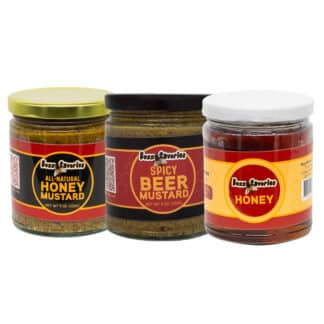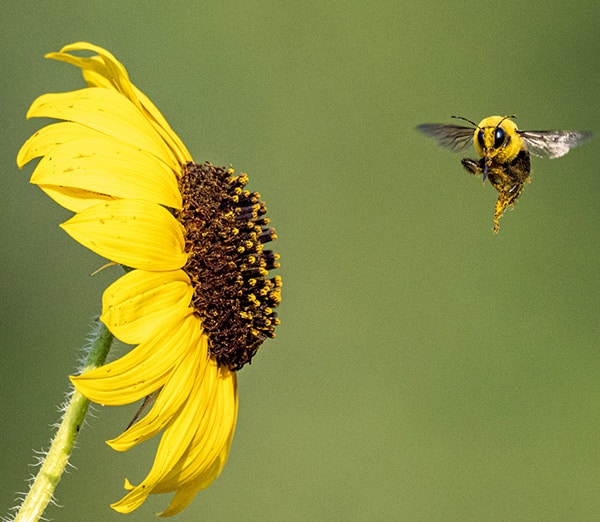

2023 Bee Biz
June 2023
We started 4 new hives of bees this spring. We ordered 4 packages of worker bees and 4 queens including 2 Saskatraz and 2 Carnolian queen bees. Each package held 10,000 worker bees.
The queens travel in small individual wood compartments accompanied by 2 or 3 attendant bees. See photo of a queen compartment.
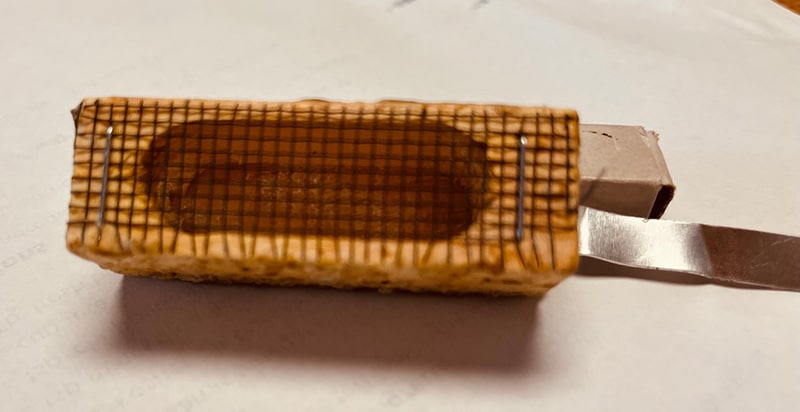
Each queen bee travels in the same box as the the worker bees although separate from them. By the time they arrive after 3 days, the worker bees have accepted her as their queen and will attend to her every need as queens deserve, it seems. We install the worker bees into their new hive box, and we release the queen shortly after the installation process.
An exception to the usual pattern happened this year. One of the queens was dead on arrival. We informed Mann Lake www.mannlakeltd.com, where we order our bee supplies and bees, and they shipped a new queen in overnight mail. She arrived as expected in her wooden compartment accompanied by 3 attendants. Because the hive does not know her nor identify her by her pheromones’, they consider her an outsider and will mob her to kill her. Instead of a quick release, we set her safe in her wooden compartment into the hive, set securely between 2 frames. We leave her for approximately 3 days while the hive is learning to recognize her smell and identify her as their queen.
I am writing this on the second day after installing her cage with attendants and her majesty into the queenless hive. Tomorrow I will open the hive and look at the bees on the outside of her wooden compartment to see if they are trying to feed her or if they act as if they will kill her when I release her. If I see them calm and nurturing, I will open her compartment so she may walk out to join her hive where she will live and lay eggs until her death. We hope she will live at least 2 years.
Successful beekeepers invest in the queens because a quality queen will lay 2,000 eggs/day. The hive numbers need to expand to 60,000 bees in order for them to make enough honey for the beekeeper to lift off 60 lbs or more/hive in late summer.
May 2023
We are welcoming 4 packages of new bees and 4 new queens to our apiary in the month of May. They will arrive in mid May in wood and screen boxes. To introduce them to their new home/hive, we first remove the metal can filled with sugar syrup that the bees could access during their trip to me in Holdrege, Nebraska then carefully pull out the small wooden/screen container for the queen and her attendants. Introducing the bees to their home is a brief and rather rugged experience since we shake them out of their small wood traveling container and aim for them to drop down into the dark hive box where a frame of last year’s honey awaits them for their pleasure. They leave through the hole left from the feed can so the shaking continues until the majority of approximately 2 pounds of bees or 8,000 bees drops into their new home. We will attach the small queen box to a frame inside the hive where the 8,000 bees will continue in their process of accepting the smell of their new queen. The introduction of the new queen to a package of bees takes several days because they need to accept her as their queen. In a few days we replace the cork plug on her small box with a miniature marshmallow and the bees will eat through the marshmallow to open her cage, and she walks out and the bees will hopefully welcome her and care for her.
-
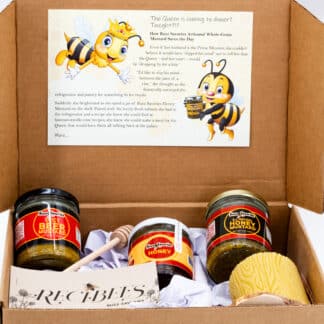
Spicy and Sweet Gift Set
$55.00 Add to cart -
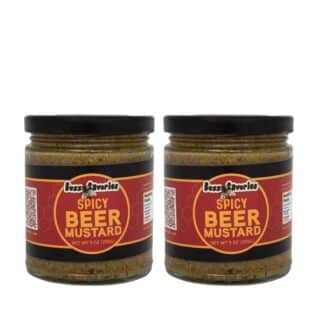
Spicy Beer Mustard
Rated 5.00 out of 5$25.00 Add to cart -
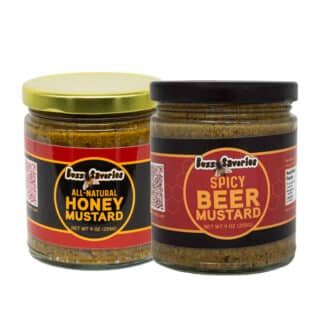
Mix & Match Sets
$25.00 Select options This product has multiple variants. The options may be chosen on the product page

